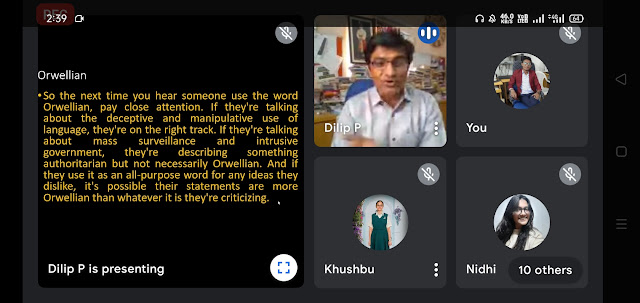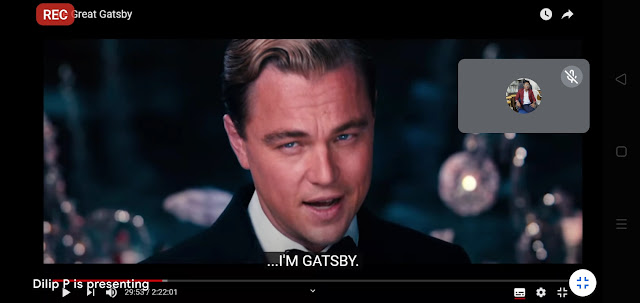Hello readers, I would like to discuss An Artist of Floating World a novel among you. Which novels come into our syllabus. Our professor has given us a task in which a few questions have been asked? The answer is here in this blog.First I will introduce the novel.
An Artist of the Floating World released in 1986, this relatively short novel is dense with ideas and possibilities. Set in Japan in the late 1940s, the story is narrated by Masuji Ono, a celebrated painter who once created propaganda for the Imperial Army. He now finds himself labeled a traitor by the younger generation, a reputation that threatens to derail his youngest daughter’s forthcoming marriage.
1] 'Lantern' appears 34 times in the novel. Even on the cover page, the image of lanterns is displayed. What is the significance of Lantern in the novel?
Lantern' appears 34 times in the novel. Even on the cover page, the image of lanterns is displayed. Because Lanterns in the novel are associated with Ono’s teacher Mori-san, who includes a lantern in each of his paintings and dedicates himself to trying to capture the look of lantern light. For Mori-san, the flickering, easily extinguished quality of lantern light symbolizes the transience of beauty and the importance of giving careful attention to small moments and details in the physical world. Lanterns, then, symbolize an outlook on life which prizes small details and everyday moments above the ideological concerns of nationalists or commercial concerns of businesspeople. It is an old-fashioned, aesthetically focused, and more traditional way of viewing the world.
2. Write about 'Masuji Ono as an Unreliable Narrator'.
An Artist of the Floating World is a masterpiece that glides in out and of many dimensions. On the one hand, it is a story of generations separated by a massive ideological gulf. On the other, it is about an older man attempting to come to terms with his mistaken philosophies. It is also a historical fiction set in the Japan of limbos; Japan, which has suffered because of its misplaced imperialism, been shattered by bombings and is now critical of the past and every person representing it. At the heart of it is an unreliable narrator, Masuji Ono. Once an acclaimed painter, Ono is our guide through post-World War II Japan and its sociopolitical and emotional trauma; felt in extremities like the once-vibrant pleasure districts destroyed by bombings and kids who loved Popeye and Godzilla.Why our narrator is unreliable is a debatable topic. At first go, it can be age. After all, Ono is well-retired with two daughters and grandchildren. However, the irregularity in information can be attributed much more to more unpleasant circumstances than memory failing. As the novel progresses, Ono is revealed to have been a man of controversial associations. During World War II, Japan was an Allied Power alongside Germany and Italy. A considerable section of the population was pro-War, viewing any opposition to the war effort with great scepticism. Ono, a pro-government imperialist, broke away from his master and drawings of the floating world (a phrase used to describe Japan’s pleasure districts) to begin painting subjects that depicted military might. At the beginning of the war, he becomes a part of a state committee clamping down on unpatriotic art. Ono reports Karudo, once his protégé. As a result, Karudo’s paintings are burnt, and the police harass him. Ono tells us that he tried to step in and convince the authority to go easy on Karudo. However, whether it is the truth or just another way to hide his betrayal and cruelty, we don’t know.
3. Debate on the Uses of Art / Artist (Five perspectives: 1. Art for the sake of art - aesthetic delight, 2. Art for Earning Money / Business purpose, 3. Art for Nationalism / Imperialism - Art for the propaganda of Government Power, 4. Art for the Poor / Marxism, and 5. No need of art and artist (Masuji's father's approach)
The role of art has differing conceptualisations in the novel, in turn having implications for the artist. Artistic vision that seeks to create purely for aesthetics sake, focusing on visual beauty without illuminating any deeper meaning, is represented in Moriyama’s partiality for capturing the fleeting and temporary ‘floating world’, but which consequently leads the artist into the guilty pleasures of a decadent lifestyle. The production of large-scale commissioned, stereotypical pieces are seen in those produced at Takeda’s firm, which preferences commercial benefit over a commitment to technique, and which portrays it’s artists as production-line workers rather than as having any real artistic talent. Matsuda’s ideal that art should go beyond a representation of visual beauty to serve larger socio-political purposes shows how art can be reappropriated and manipulated by other agendas, and how in turn, the artist becomes publicly associated with the subject matter and responsible for its influence. That art serves no purpose other than to drive the artist into a life of self-absorption and depravity is presented through Ono’s father whose prediction that such a life will befall Ono ironically comes true for a time.The novel further explores the dire consequences which befell artists whose art is viewed as divergent. Moriyama demanded strict adherence to his art principles, with students who departed from his style being expelled from his class, including Ono. Wartime artists whose work diverged from the Japanese Imperialism style had more serious repercussions, seen when Kuroda is interrogated and imprisoned. This raises larger questions about art, in terms of whether art should be politicised or serve only as a source of gratification. Arguably, the war would have continued despite Ono’s posters. Perhaps if Ono had retained the ‘narrow view’ of which Matsuda accused him, staying true to his aesthetic ideals throughout the war, he may have emerged postwar with an artistic.
4. What is the relevance of this novel is times?
The novel’s protagonist and narrator, Masuji Ono, focuses almost entirely on the relatively narrow world of a single city. Detailed descriptions of the building, renovation, destruction, and erasure of the various physical landmarks in his city that are important to him suggest a narrator much more interested in his own legacy than in the larger historical changes gripping his country. The irony of this is that Ono rose to prominence as a nationalist painter, painting pictures whose purpose was to urge Japanese patriots to fight foreign wars and create a dominant imperial power. In the end, the contrast between Ono’s narrow focus on his city and the nationalist and imperialist themes of the work that brought him acclaim proves that Ono was an opportunist who painted propaganda.In the end, the intense focus on physical spaces and how they look at different moments in time that characterizes Ono’s narrative also suggests what might have been a truer path for him as an artist. Instead of work that focuses on human subjects or political messages, Ono’s true talent lies in capturing a place at a particular time.
Thanks 😊.

























